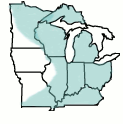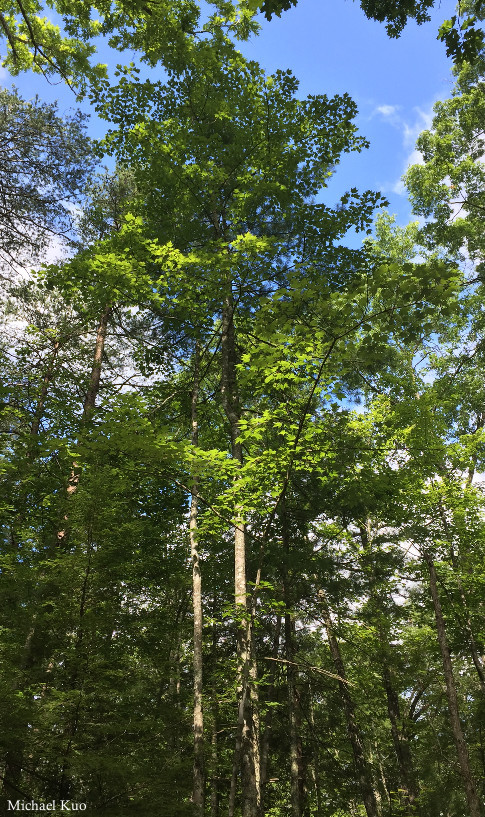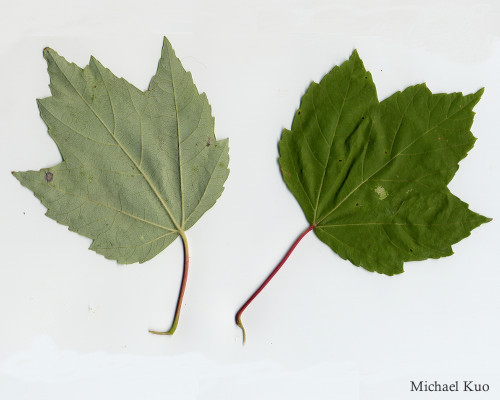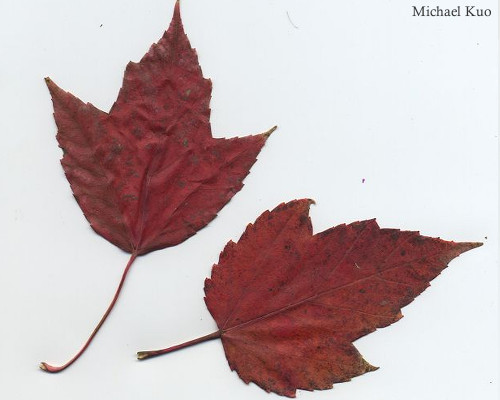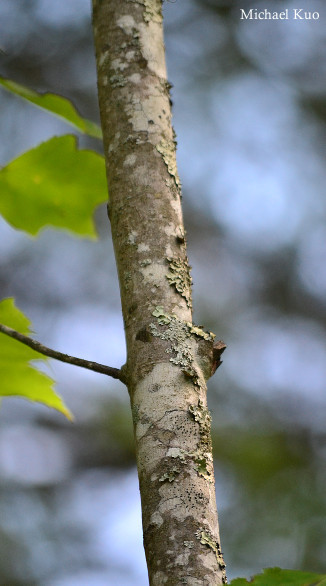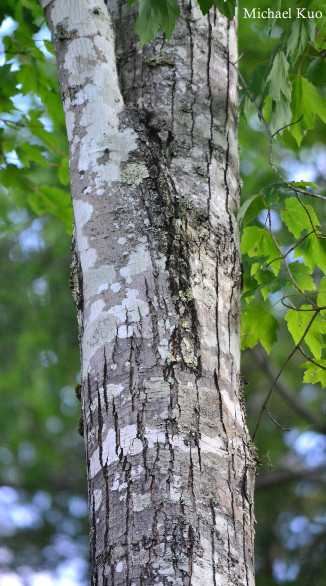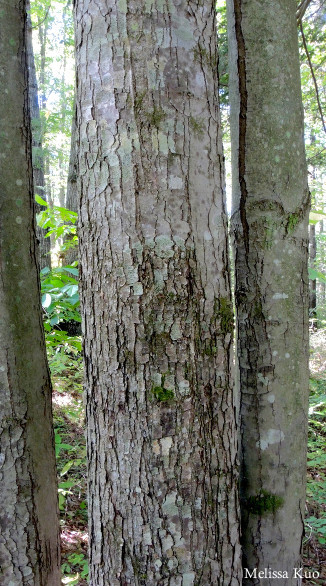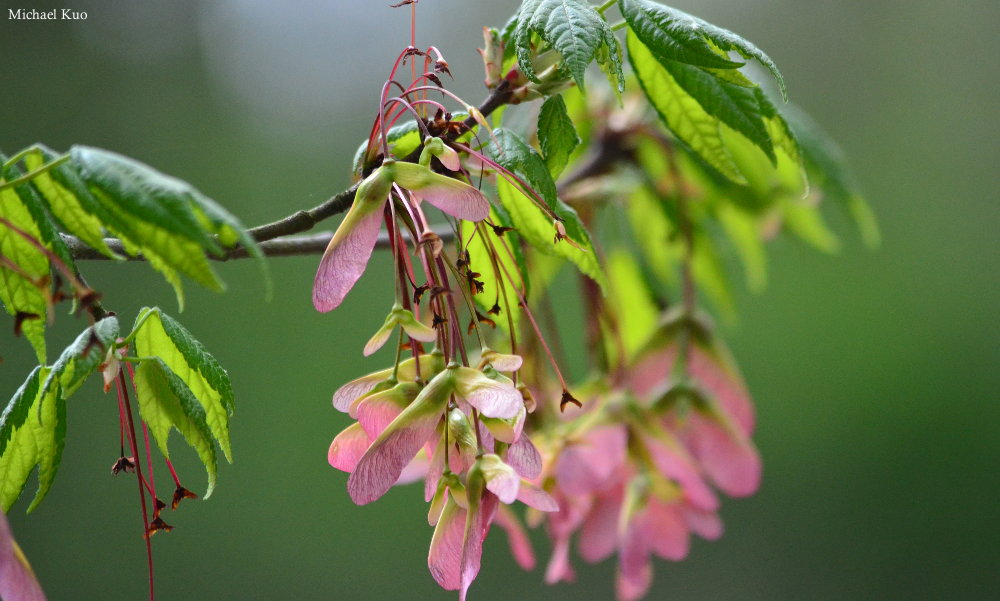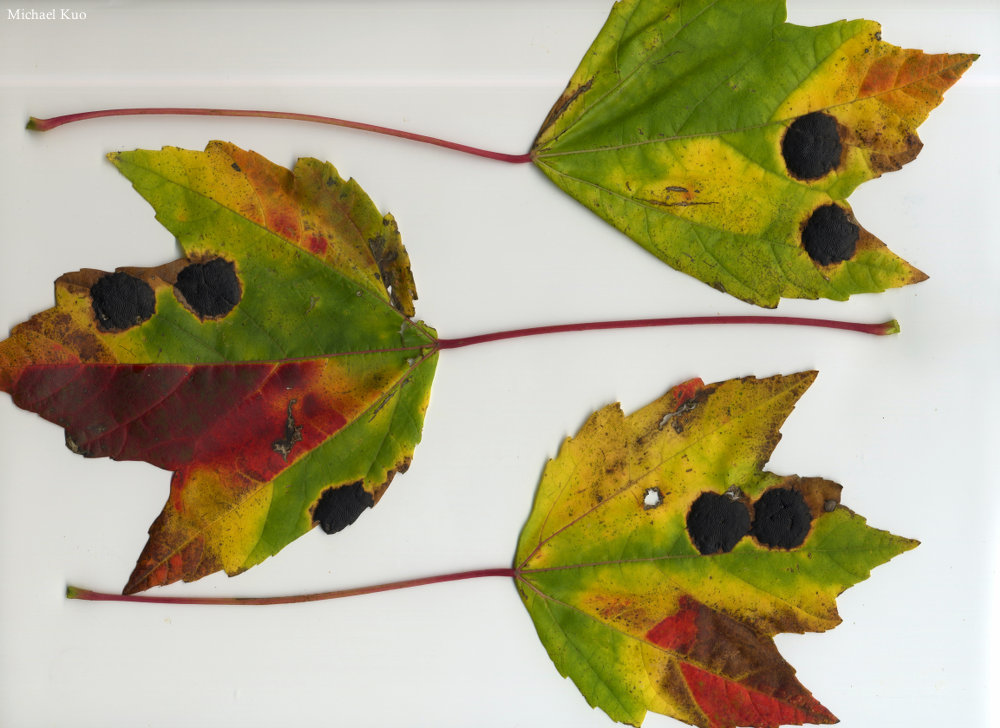 Acer rubrum (red maple) |
 |
|
Red maple, Acer rubrum, is particularly fond of low-lying, wet areas, but also appears in drier forests. In our area (central Illinois) it is uncommon in natural settings, but we see it frequently in Michigan, southern Ohio, and Kentucky. Red maple is aptly named; its leaves turn red in the fall, its spring flowers are red, and its leaf-stems are red. The leaves of red maple are arranged in opposing pairs and have three (rarely five) main lobes which are "cut" less than half of the distance to the base of the leaf. The upper side is green, but the underleaf is silvery-whitish. The leaf-stems (petioles) are long, naked, and red. Red maple bark is similar to the bark of silver maple: young bark is pale gray and smooth, while in older trees shallow longitudinal cracks develop. Pale, whitish and hospital-pastel-green lichens are often found all over the bark. |
|
|
|
|
|
|
|
|
|
|
|
|
|
References: Harlow 1946, Peattie 1948, GN Jones 1971, Miller & Jaques 1978, Kricher & Morrison 1988, Preston 1989, RL Jones 2005, Mohlenbrock 2006, Kershaw 2007, Voss & Reznicek 2012, Mohlenbrock 2014. Kuo, Michael & Melissa Kuo (September, 2017). Acer rubrum (red maple). Retrieved from the midwestnaturalist.com website: www.midwestnaturalist.com/acer_rubrum.html All text and images © , midwestnaturalist.com. |
